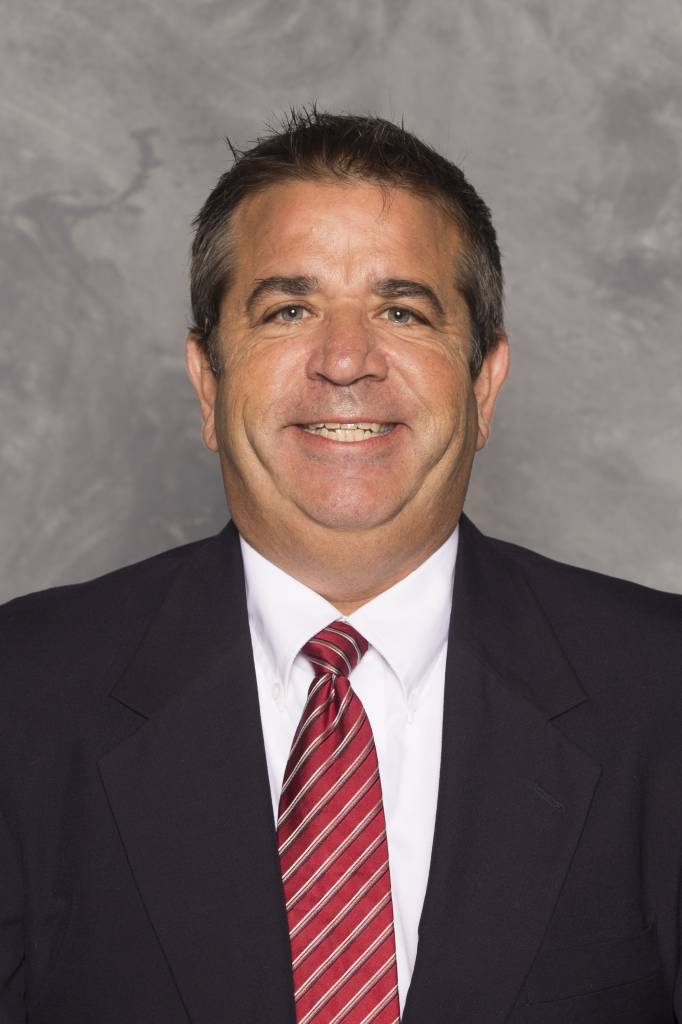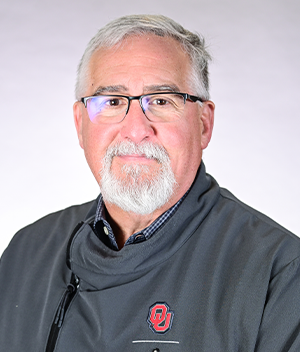
Stadium Tech Report interviews Ohio State’s Jim Null and Oklahoma’s David Payne on how top college programs have used technology to help improve the fan experience in the face of challenges and change.
When it comes to the world of collegiate sports information technology, there may not be two people with more experience than Jim Null and David Payne.
And even though Jim (whose full title is senior associate athletic director and CIO / Athletics and Business Advancement) leads the sports IT effort at the Ohio State University while David (senior technology strategist for Athletics) does the same at the University of Oklahoma — two schools that are almost always in the hunt for national championships in many sports — there may also not be two better friends in the industry.
According to the two, it’s a friendship born of the mutual need to have a like mind to share ideas and information with — a partnership Jim and David have spread across the U.S. collegiate sporting world, fostering knowledge-sharing among their peers in both formal and informal ways. Listen in as we talk with Jim and David about the challenges of dealing with the accelerated change brought about by the recent Covid pandemic, and what the future looks like as more technology is introduced to the tradition-bound world of collegiate athletics.
‘Twin sons of different mothers’
Editor’s note: This is the fifth episode in our new series of Stadium Tech Report podcasts — take a listen and let us know what you think! Thanks to our podcast title sponsors, ExteNet Systems and MatSing, for their support.

It’s always fun to talk to either Jim or David, and having both of them together on the line was a special treat. Not only did we get a constant dose of good-friend humor but given the fact that the two of them basically helped invent the spirit of cooperation amongst collegiate IT types, their paired thinking comes across with every topic we discussed.
But even decades of work experience couldn’t truly prepare either of them (or anyone, really) for the Covid pandemic and the changes it brought to the world in general and to stadiums in particular. With both David and Jim at the IT helm of large, traditional sports programs it’s instructive to hear them talk about how their organizations dealt with the numerous new tasks and experiences wrought by the pandemic — and how, even in the face of its horror, there were good lessons learned that helped improve the business in the aftermath, like the accelerated move toward things like digital ticketing.
Subscribe to the Stadium Tech Report podcast on iTunes!
One thing that helped both schools weather the pandemic changes better than most was the fact that both had upgraded their football stadiums to a Wi-Fi 6 infrastructure in 2019, ahead of most venues. (You can read profiles of both deployments in our previous reports, here for Oklahoma and also here for Ohio State)
“When it came to moving to all-digital ticketing a lot of venues had to figure out how to get more connectivity out to the entry gates,” said Payne. “Thanks to the upgrades that was not something that we had to deal with.”
And of course, the two of them talked about how, during the deployments (which took place at approximately the same time) they spent a lot of time on the phone with each other, discussing issues from either end.
More concessions technology, more seating options, more sports
While football is certainly a popular item at both schools, with multiple sports both Null and Payne have concerns away from the gridiron, like building new facilities for sports with fast-growing popularity, like women’s softball and field hockey. At all sports facilities both said they are constantly on the lookout at new technologies like those being introduced in the concessions space, where grab-and-go or checkout-free stands are starting to address that common pain point, the long lines for food and drink.
And even though both schools’ historic stadiums have been around for a long time, both schools are also constantly looking at ways that technology and non-technology (like adding more public-mix areas and clubs and porches instead of fixed seats) will play roles in the future. If there is one thing that their decades of experience has taught them, it’s that trying to figure out what’s next is better learned than guessed. And it’s also a good bet that if one of them finds something out, he’s going to tell the other one, quickly.
Listen to Stadium Tech Report podcasts on Spotify!
PREVIOUS PODCASTS
STR Podcast: How AT&T Stadium rewrote the DAS playbook with its new network
STR Podcast: We talk advanced weapons detection systems with Mike Ellenbogen, founder and chief innovation officer at Evolv Technology
Technical production for the Stadium Tech Report podcast is led by Creative Director Dan Grimsley, and Digital Designer Jackie Nguyen. Web and design work is by David Fares and John David. All contents of the Stadium Tech Report podcast are copyright, Stadium Tech Report. Audio, video and print content may not be re-used without the express written consent of Stadium Tech Report.


